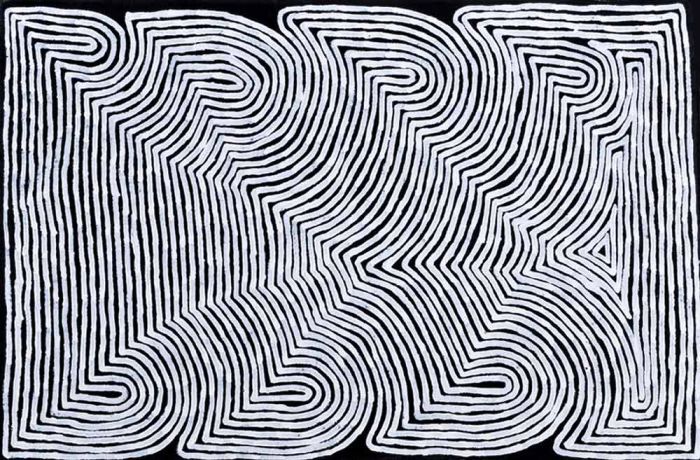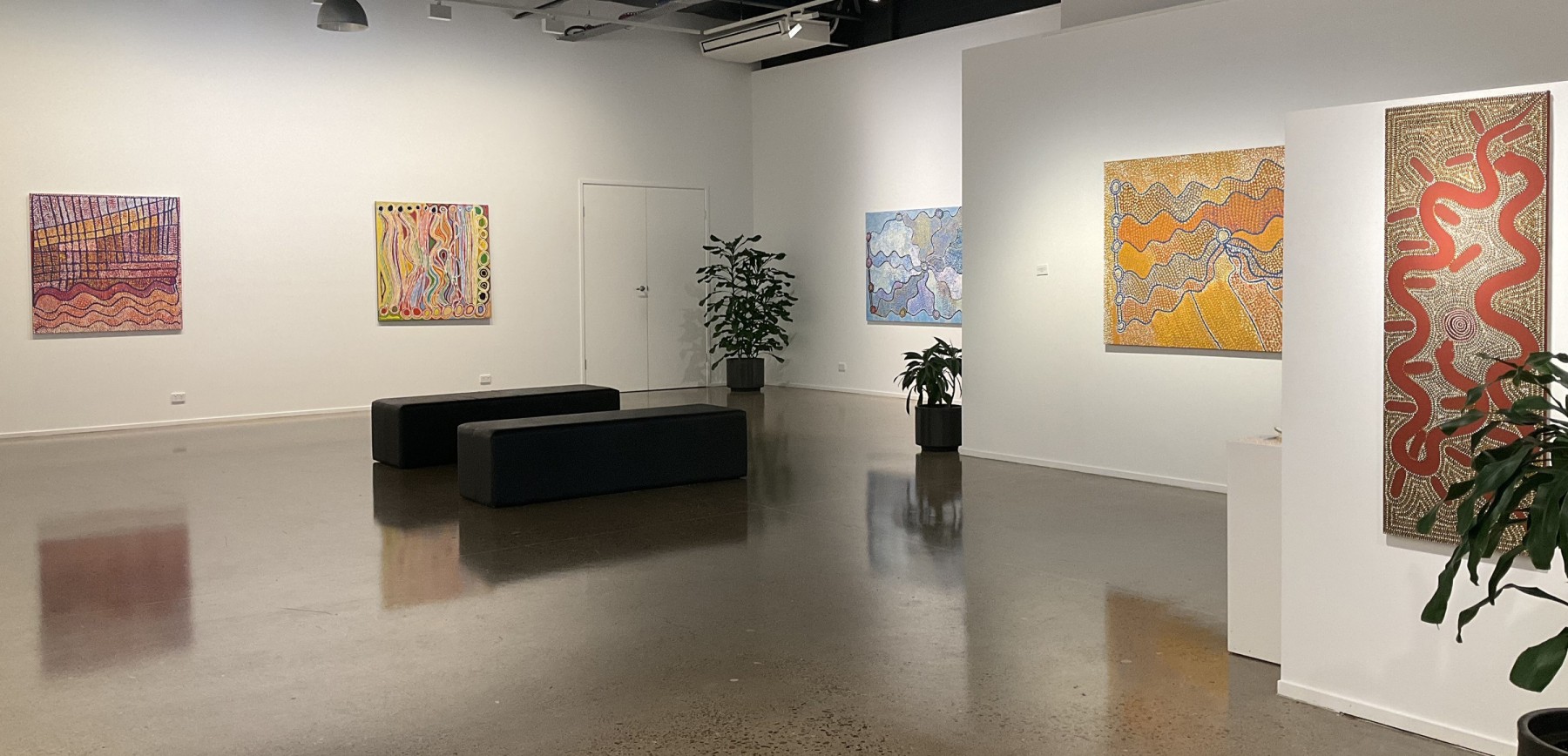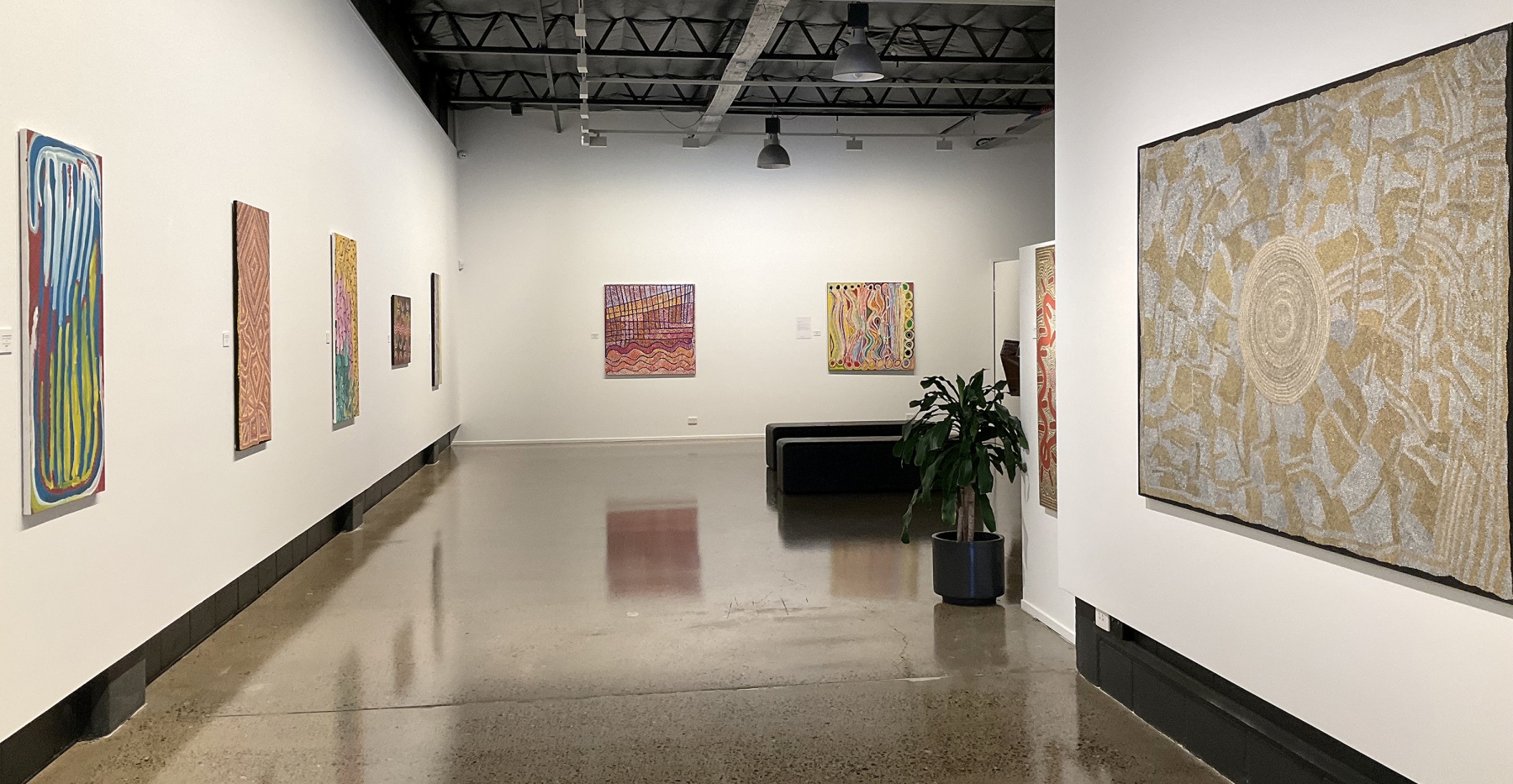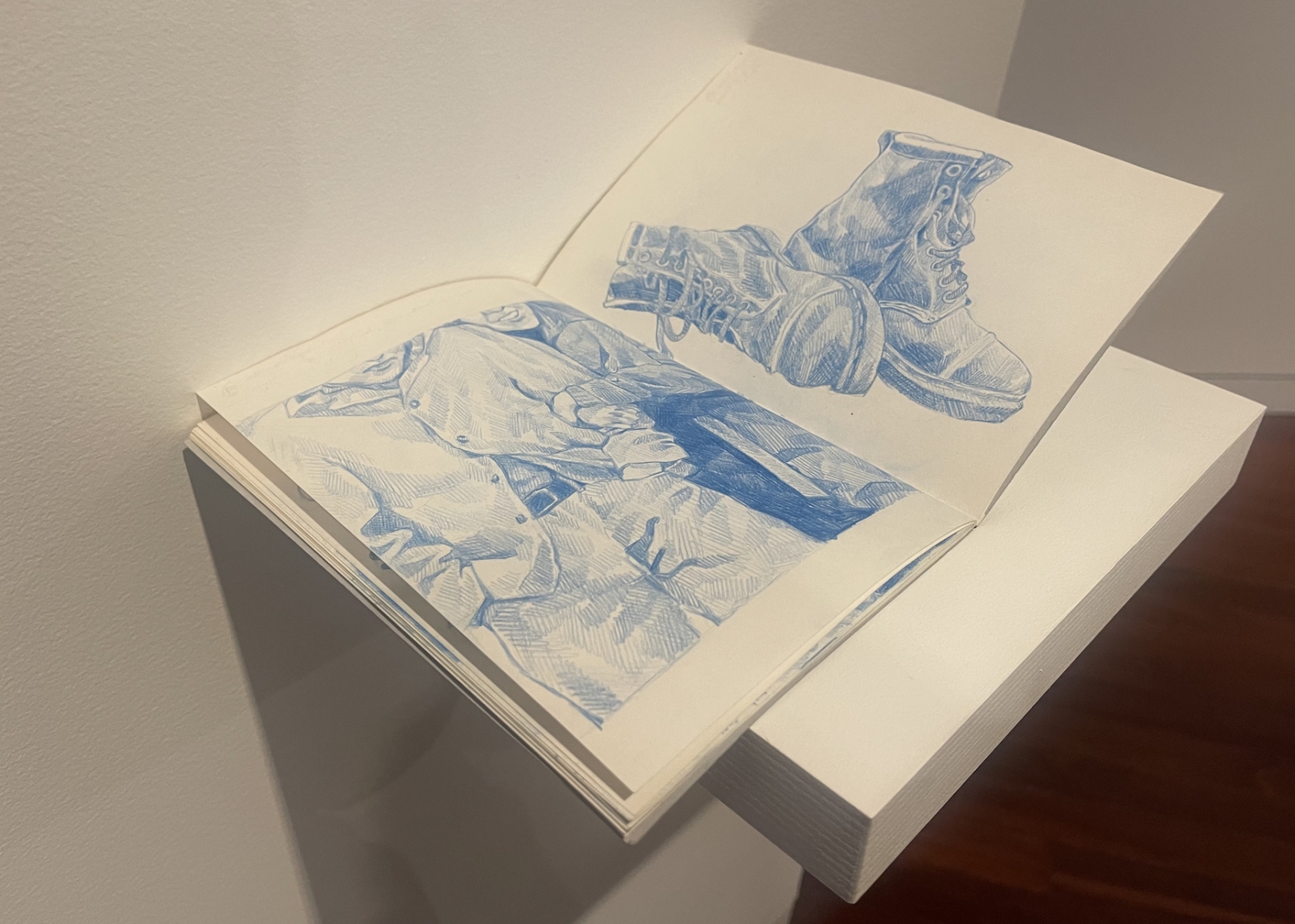Ngapa (Water Dreaming) brings together significant Central and Western Desert artists engaging in water Dreamings from their respective Country. The artworks detail the Dreamings of drought, rains, floods, soakages, and rockpools, and how the knowledge of water sources is passed through Songlines. Most significantly, they represent the life that water brings to the arid desert, nourishing the people who have known its sands for time immemorial. Water’s provision of sustenance is celebrated through representations of complex ceremony and lore.
Kapi Tjukurrpa (Water Dreaming) (2007) by Pintupi artist, Ronnie Tjampitjinpa, grounds the exhibition. Bold, pulsating lines of yellow move seamlessly into red, against a black background, resembling the movement of water across the land. Kapi Tjukurrpa reminds me that like the land, water too is Sovereign. Via this entrance, there is no mistaking that we live on and consume unceded water.
Heading into the gallery space reveals a vast explosion of colour, like the burst of life after big rains. Noel Ross Napalltjarri’s colossal artwork, Ngapa Jukurrpa (Water Dreaming) emulates the wet season rains pooling across the land. Although pared back in colour, the painting is vast in size.
Opposing this work is the late Judy Watson Napangardi’s Mina Mina Jukurrpa (2007), depicting a site of women’s business for Warlpiri in a place now called the Tanami Desert. Mina Mina is a site of significant water Dreaming in Warlpiri Songlines and can only be depicted by the women of Napangardi and Napanangka skin groups, who have custodianship of this Country.[1] Unlike other artworks of the area, which highlight its salt lakes and sandhills, Watson Napangardi’s work features a bright and varied colour palette, capturing the rich diversity of Country in loose and fluid forms. A complimentary work by the artist, also titled Mina Mina (2009), showcases the abundant flora of her homeland. Both highlight the deep and sacred relationship of the artist and her clanswomen to the land and waters.
Further along the wall hangs celebrated Warlpiri artist, the late Lorna Fencer Napurrula’s Ngapa (Water Dreaming) (2002). Napurrula’s work depicts the custodianship of her Country through the water Dreamings of the Napurrula and Nakamarra clans.
Anmatyerr artist Clifford Possum’s Water Dreaming (2001) and Warlpiri artist Janet Long Nakamarra’s Ngapa (Water Dreaming) (2012) bookend the wall. Nakamarra’s is a beautiful representation of the landscape transformed by rain’s revitalisation of the land. Detailed white patterning veils block colours of deep red, brown and green.
Warlpiri artist Kay Rubuntja Naparrula’s twinned Ngapa (Water Dreaming)(s) of monocratic red (2008) and black (2014) give the exhibition delicate breath. Both depict a soakage site on her homelands. The artist’s careful markings draw me and expand before my eyes.
Three grand expressions by the late Warlpiri artist Shorty Jangala Robertson, all titled Ngapa Tjukurrpa (2009), offer a majestic finale to the show. Each utilise distinct colour palettes to depict the rains summoned through Ceremony. Lines in the artwork meet, at one point or another, showing the connection and flow of waters in floods and drainage. Their captivating revelation of the relationality of water and the land stays with me beyond the walls of the gallery.
Ngapa Water Dreaming is about the intertwined relationships between people, the land, and the movements of nature. Mitchel Fine Art’s white cube is enlivened by these works and the hands of their makers, all remarkable Desert Elders and artists. On leaving the gallery, I feel a sense of great privilege in viewing these works, some by artists whom have passed on, and viewing their land and waters through their eyes.
[1] David Wroth, “Women’s Dreaming Mina Mina Jukurrpa,” Japingka Aboriginal Art, https://japingkaaboriginalart.com/articles/mina-mina-jukurrpa/.
Jocelyn Flynn is Notsi from Niu Ailan province, Papua Niugini with Anglo-Celtic lineages. She researches, writes, mediates and curates critically engaging projects.





